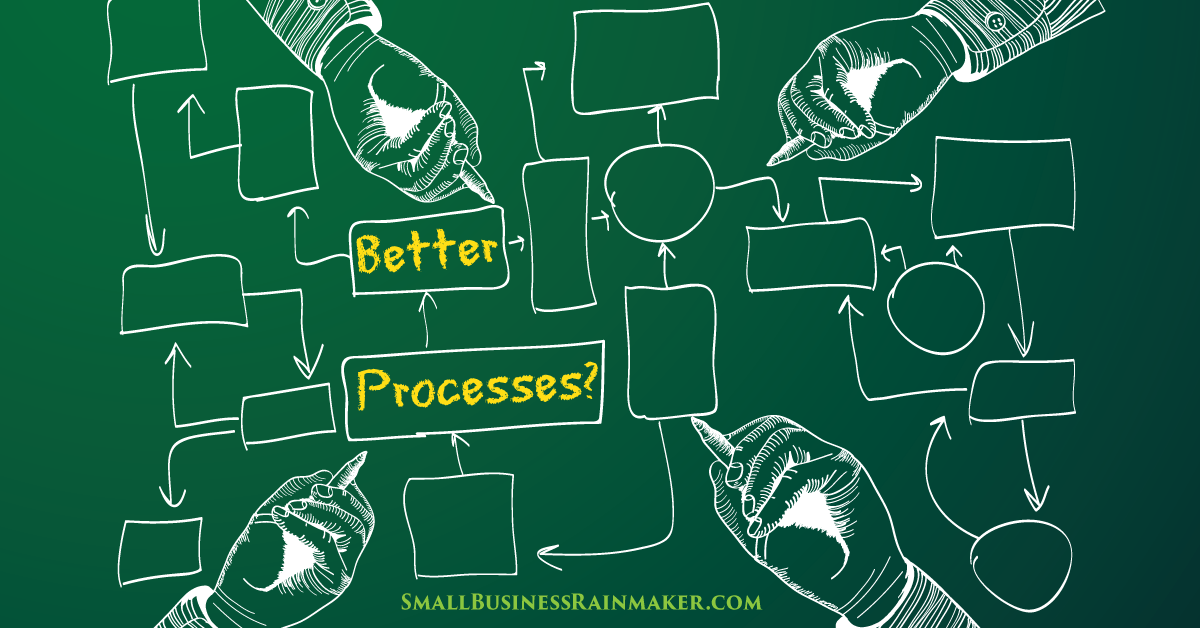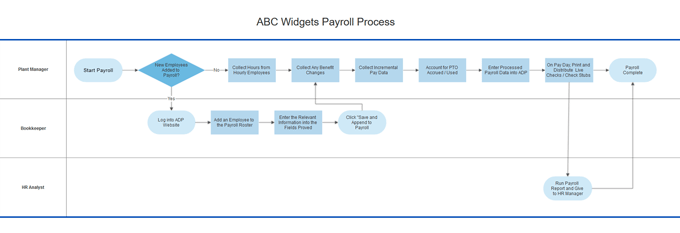
A business process is any series of related tasks that ends with the company delivering a product or service to a customer or client. Inefficient processes lead to unhappy clients, disgruntled workers, and potentially even missed deadlines for delivery.
The best way to deal with inefficient processes is to improve them.
Why Efficient Business Processes are Important
Efficient processes reduce workload and streamline the delivery of a product or service. Processes can even include relatively simple tasks. For example, simple financial processes such as how you invoice customers is a process.
When a business fails to improve and streamline its processes, it risks falling behind in the market and losing customers to its competitors. Improving processes can be as simple as having a methodology for completing a complex task, or distributing that task among other members of a team.
7 Steps to Improving a Business Process
As explained in this discussion, business process improvement is an incremental process. Changes that happen to the company won't immediately affect anything in the short term. The potential change to the business’s efficiency over time is what the process improvement team should be focused on.
1. Process Definition
The first step in any business process improvement strategy is to define exactly what process the company wants to improve. Typically, teams that are working on process improvement utilize diagrams such as a flowchart or a swim lane diagram. As Lucid Chart reports, a swim lane diagram performs the functions of a typical flowchart, but also assigns the responsibilities to a particular individual or department.
 Example of a swim lane diagram of a process
Example of a swim lane diagram of a process
Defining the process may mean using the input from people who deal with the process daily. Interviews and discussions help to inform the process improvement team of sub-steps that may not be immediately obvious.
2. Explore Related Opportunities
Within interviews for process definition, people who utilize that process regularly may offer insight into potential improvements that could benefit the system. These related opportunities may be worth exploring if they further enhance the efficiency of the system.
The development of a detailed problem statement offers the process improvement team an appreciation of where changes to the operation can and should occur. Additionally, the team can pinpoint and remove extraneous steps and sub-steps within the process if they don't seem to serve a purpose.
3. Process Analysis
In this step, the process improvement team can look at the swim lane diagram and figure out where bottlenecks occur within the system. As Kiss Flow notes, without a proper analysis step, teams are likely to waste time and resources searching for problems on the fly.
Generally, the analysis step can be broken down by asking a few pertinent questions, such as:
- Where do the majority of costs to the business occur?
- Do any steps seem to create a bottleneck?
- Which part of the process frustrates customers or team members the most?
- Where are the majority of delays happening?
- Which step or sub-step of the process takes the most time to get done?
Analysis methods such as Root-Cause Analysis or Cause-and-Effect Analysis can help the team work out the underlying issues that bring about the problems. Solving the problems themselves only deals with the symptom of the problem, which will resurface later on and require the team to deal with it again.
4. System Redesign
Once the team has highlighted the underlying issues that affect the process, they start redesigning it to eliminate those issues. An initial brainstorming session gets ideas on the table. Once the team generates a substantial enough list of solutions, they can start narrowing down the ones that aren't cost-effective or are too time-consuming to implement.
Selected solutions should be exposed to risk analysis and impact analysis to see the full extent of the team's proposed solution, and what the potential fallout for implementing this solution could be.
5. Locate Available Resources
After finalizing the plan for redesigning the system, the team needs to find the resources that they have available to implement the redesign. These resources could range from human resources to software, hardware, and infrastructure.
Communication with the human resources department, IT, and other stakeholders helps the team understand how their system redesign will happen, as well as inform them of any internal issues that may impact the completion of the process.
6. Institute Change and Inform Stakeholders
While business process improvement can be incremental, massive changes do occur from time to time, which shake up a business to its core. Improvements may require the replacement of teams, infrastructure, and even hardware and software systems. Enabling this change may require managing an entire project in itself.
Another significant problem that process improvement faces is the inability of many people to embrace change. To deal with this, the team may utilize theoretical models such as Kotter's 8-Step Change Model. As Educational Business Articles mentions, the model is a simple method of implementing teamwork, transparency, and communication into the process improvement methodology.
7. Process Review
As initially stated, process improvement is a gradual process. Even newly revamped processes don't work as expected because the world is an unpredictable place. To offer suggestions for the process's next iteration, a system of constant review is necessary.
Methodologies such as Kaizen can be useful in ensuring that the process efficiency is improved in each iteration. Kaizen, as defined by the Kaizen Institute, is a system of continuous improvement applied to a business's long-term competitive strategy.
Nothing Happens Immediately
In our fast-paced digital world, we’ve come to expect immediate results with everything we do. That’s an unrealistic expectation when it comes to business process improvement.
Instead, teams dedicated to the improvement of business processes look at time as a series of cycles, with each step getting closer to achieving full efficiency. Changes that happen within organizations, especially those that impact the daily tasks of the company, occur gradually. Having a business process improvement team allows a company to retain its competitive edge by constantly streamlining its production or delivery process.
 Samantha Wallace is a veteran tech writer and editor who has worked in several e-commerce companies. She has been covering technology online for over five years.
Samantha Wallace is a veteran tech writer and editor who has worked in several e-commerce companies. She has been covering technology online for over five years.
She is the Content Advocate for GreenwingTechnology.com.














Leave a comment